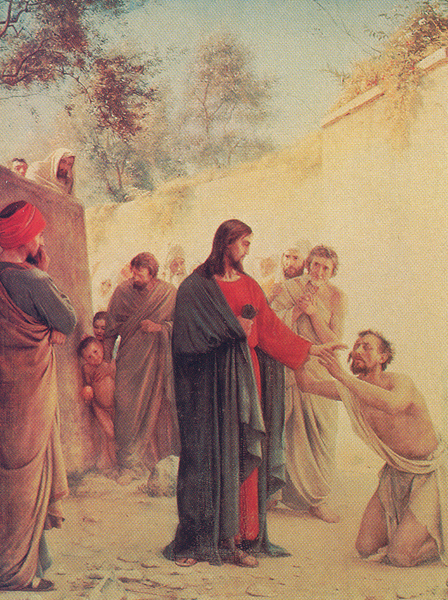Image Details

Superstock
Mud made with Jesus’ spittle gives sight to a man blind from birth (John 9:1), portrayed here in The Man Born Blind by Dutch painter Carl Heinrich Bloch (1834–1890). Jesus again uses his spittle, as well as an intent gaze, to core a blind man in Bethsaida (Mark 8:22–26). Since saliva served as an ancient folk remedy and the intent gaze resembles hypnotism, one might try to explain Jesus’ healing miracles as a clever use of psychology and hypnotism to core persons with psychosomatic ailments. Such explanations, however, tell us nothing about the theological meaning of Jesus’ healing miracles.
The New Testament text indicates that the healing miracles represent the end of the power of evil and the beginning of the Kingdom of God. Jesus makes this explicit when he tells some of his disciples to “cure the sick … and say to them ‘the Kingdom of God has come near to you’” (Luke 10:9). When the disciples return, they tell Jesus, “Lord, in your name even the demons submit to us” (Luke 10:17).
